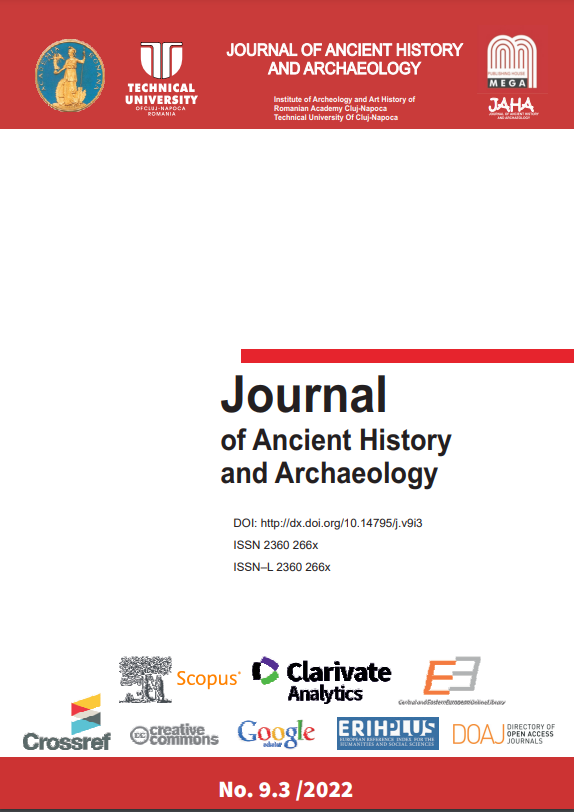SHRINES OF THE DOMUS IN THE QUARTER OF ST. THEODORE IN PULA
SHRINES OF THE DOMUS IN THE QUARTER OF ST. THEODORE IN PULA
Author(s): Alka StaracSubject(s): History, Archaeology, Ancient World
Published by: Editura Mega Print SRL
Keywords: Dionysius; domus shrine, niche; Pula; Salus;
Summary/Abstract: In the quarter of St. Theodore in Pula, next to the public thermae and Hercules' sanctuary, in 2005, most part of the luxurious domus was excavated. The domus was inhabited from the third quarter of the 1st century BC to the 5th century AD, with one major restoration after the fire in the beginning of the 2nd century AD. Architectonic cult indicators are a threshold mosaic with Dionysian motifs of kantharos and wine, niches in the walls and elements of marble architectural decoration of cult spaces, a capital and an architrave. A total of six niches were discovered, one with a white and black mosaic depicting a shell, an altar and containing a dedication to the goddess of Salus. Small finds are represented by various objects used in rituals or objects symbolizing the divine presence. Fragments of the censer with letter-shaped openings, fragments of a large calcite alabaster crater, a clay vessel fragment with a theatrical mask in relief, clay lamps with figures of Minerva and Medusa were found in the triclinium. The finds of Corinthian drinking cups decorated with Dionysian scenes come from other rooms, and from the drainage channel comes a bronze medallion with the Medusa head probably belonging to a carriage. The findings from the domus confirm the presence of cults in every aspect of everyday life. A peculiar niche dedicated to Salus is associated with the neighbouring public thermae and the sanctuary of Hercules built at the sacred spring.
Journal: Journal of Ancient History and Archaeology
- Issue Year: 9/2022
- Issue No: 3
- Page Range: 103-124
- Page Count: 22
- Language: English

